After concluding the Battle of Kiev in September 1941, the German Army Group South advanced from the Dniepr

Walther von Reichenau's 6th Army captured Kharkov.


Carl-Heinrich von Stülpnagel's 17th Armymarched

through Poltava 

towards Voroshilovgrad. Erich von Manstein's 11th Army moved into the Crimea and had taken control of all of the peninsula by autumn (except Sevastopol, which held out until 3 July 1942).
of the peninsula by autumn (except Sevastopol, which held out until 3 July 1942).
 of the peninsula by autumn (except Sevastopol, which held out until 3 July 1942).
of the peninsula by autumn (except Sevastopol, which held out until 3 July 1942).Ewald von Kleist's 1st Panzer Army advanced from Kiev,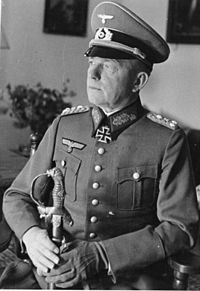 and encircled Soviet troops at Melitopol in October,
and encircled Soviet troops at Melitopol in October,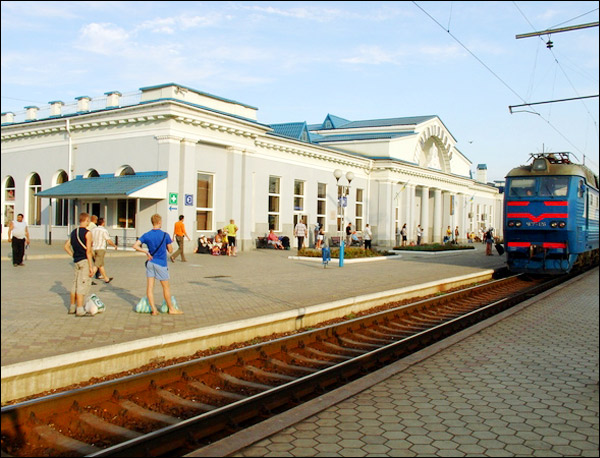 then attacked east along the shore of the Sea of Azov toward Rostov at the mouth of the Don river,
then attacked east along the shore of the Sea of Azov toward Rostov at the mouth of the Don river,  known as the gateway to the Caucasus
known as the gateway to the Caucasus Rostov was assigned as the objective for the 11th Army now commanded by General von Schobert
Rostov was assigned as the objective for the 11th Army now commanded by General von Schobert , however he
, however he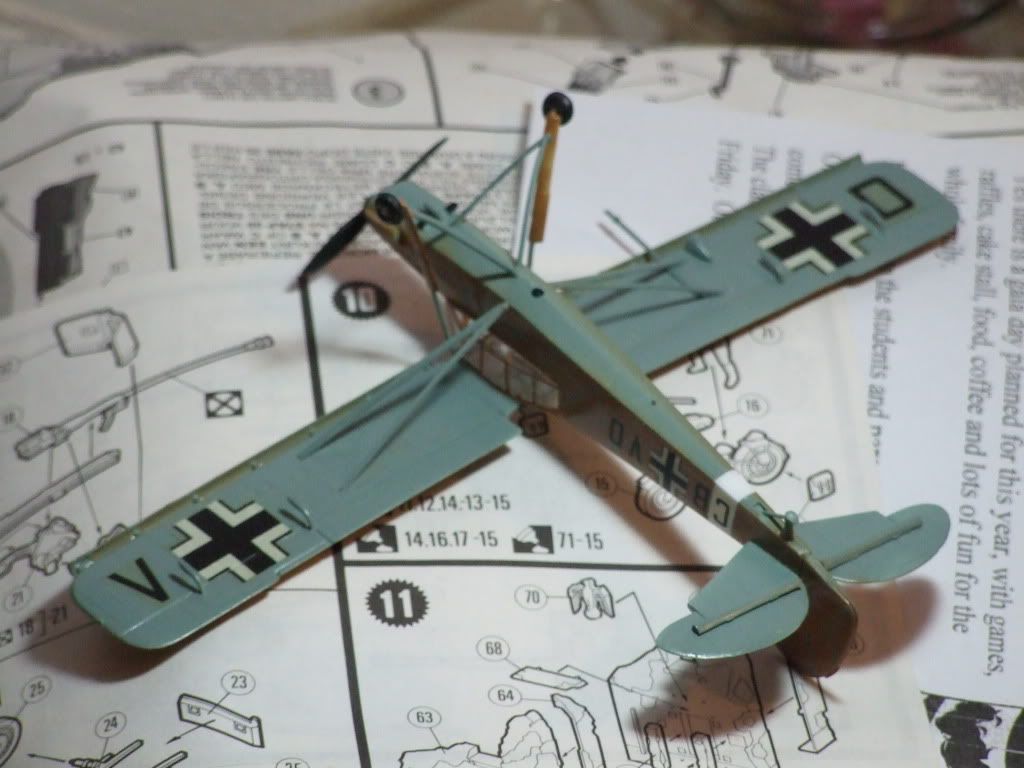 died in a crash on the same day after landing his liaison Fieseler Storch aircraft in a minefield. T
died in a crash on the same day after landing his liaison Fieseler Storch aircraft in a minefield. T o replace him, General of Infantry von Manstein was ordered to travel from the Leningrad sector of the front to the
o replace him, General of Infantry von Manstein was ordered to travel from the Leningrad sector of the front to the 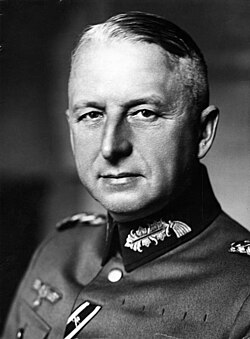 extreme southern sector. He would also receive support from the 4th Luftwaffe Air Fleet.
extreme southern sector. He would also receive support from the 4th Luftwaffe Air Fleet.
 and encircled Soviet troops at Melitopol in October,
and encircled Soviet troops at Melitopol in October, then attacked east along the shore of the Sea of Azov toward Rostov at the mouth of the Don river,
then attacked east along the shore of the Sea of Azov toward Rostov at the mouth of the Don river,  known as the gateway to the Caucasus
known as the gateway to the Caucasus Rostov was assigned as the objective for the 11th Army now commanded by General von Schobert
Rostov was assigned as the objective for the 11th Army now commanded by General von Schobert , however he
, however he died in a crash on the same day after landing his liaison Fieseler Storch aircraft in a minefield. T
died in a crash on the same day after landing his liaison Fieseler Storch aircraft in a minefield. T extreme southern sector. He would also receive support from the 4th Luftwaffe Air Fleet.
extreme southern sector. He would also receive support from the 4th Luftwaffe Air Fleet.At this time the LIVth Army Corps of the 11th Army was still engaged in Crimea, and because the Romanian forces were still engaged in the Siege of Odessa,
and because the Romanian forces were still engaged in the Siege of Odessa, the Army's resources for the Rostov objective were severely limited even against retreating Red Army troops.
the Army's resources for the Rostov objective were severely limited even against retreating Red Army troops. *above painting by the great Carlo Antonio from RomeTherefore initially von Manstein replaced the LIV Corps with the smaller XXXth Army Corps and XLIXth Mountain
*above painting by the great Carlo Antonio from RomeTherefore initially von Manstein replaced the LIV Corps with the smaller XXXth Army Corps and XLIXth Mountain Corps, and ordered the LIV Corps into the first echelon in the advance to Rostov.
Corps, and ordered the LIV Corps into the first echelon in the advance to Rostov.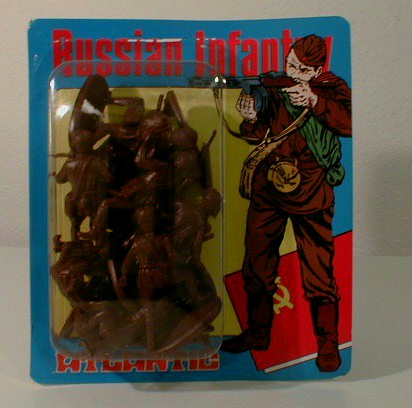
 and because the Romanian forces were still engaged in the Siege of Odessa,
and because the Romanian forces were still engaged in the Siege of Odessa, the Army's resources for the Rostov objective were severely limited even against retreating Red Army troops.
the Army's resources for the Rostov objective were severely limited even against retreating Red Army troops. *above painting by the great Carlo Antonio from RomeTherefore initially von Manstein replaced the LIV Corps with the smaller XXXth Army Corps and XLIXth Mountain
*above painting by the great Carlo Antonio from RomeTherefore initially von Manstein replaced the LIV Corps with the smaller XXXth Army Corps and XLIXth Mountain Corps, and ordered the LIV Corps into the first echelon in the advance to Rostov.
Corps, and ordered the LIV Corps into the first echelon in the advance to Rostov.
Late in September the 3rd Romanian Army joined the 11th Army in its advance towards Rostov, but was severely depleted by the attacks of the Soviet 9th and 18th Armies on the 26th of September. This forced a halt to thes
depleted by the attacks of the Soviet 9th and 18th Armies on the 26th of September. This forced a halt to thes
 Army's advance to safeguard its flank, and forced von Manstein to use his only mobile reserve unit, the
Army's advance to safeguard its flank, and forced von Manstein to use his only mobile reserve unit, the 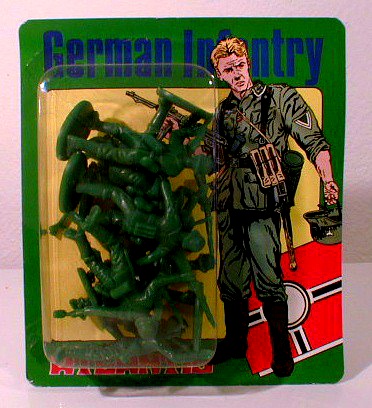 Leibstandarte Brigade to shore up Romanian defenses.[The Soviet counter-attack delivered as part of the general
Leibstandarte Brigade to shore up Romanian defenses.[The Soviet counter-attack delivered as part of the general  Donbass-Rostov Strategic Defensive Operation (29 September 1941 - 16 November 1941) also forced the Army
Donbass-Rostov Strategic Defensive Operation (29 September 1941 - 16 November 1941) also forced the Army Group Commander to order his 1st Panzer Army to manoeuvre in order to be better placed to counter any further Soviet
Group Commander to order his 1st Panzer Army to manoeuvre in order to be better placed to counter any further Soviet thrusts in the Romanian sector of the front, and also to attempt an encirclement of the two Soviet Armies
thrusts in the Romanian sector of the front, and also to attempt an encirclement of the two Soviet Armies , which was partly successful in the area of Chernigovka where the commander of the 18th Soviet Army General-Lieutenant Smirnov was killed during the breakout attempt between 5 and 10 October 1941. This was interpreted by Hitler as such a
, which was partly successful in the area of Chernigovka where the commander of the 18th Soviet Army General-Lieutenant Smirnov was killed during the breakout attempt between 5 and 10 October 1941. This was interpreted by Hitler as such a success that he declared "The battle of the Sea of Azov is over." on the 11 October before the troops had even reached their objective.As a commemorative gesture, Hitler issued the order to redesignate the Leibstandarte
success that he declared "The battle of the Sea of Azov is over." on the 11 October before the troops had even reached their objective.As a commemorative gesture, Hitler issued the order to redesignate the Leibstandarte  Brigade as 1st SS Division Leibstandarte SS Adolf Hitler.
Brigade as 1st SS Division Leibstandarte SS Adolf Hitler.

 depleted by the attacks of the Soviet 9th and 18th Armies on the 26th of September. This forced a halt to thes
depleted by the attacks of the Soviet 9th and 18th Armies on the 26th of September. This forced a halt to thes Army's advance to safeguard its flank, and forced von Manstein to use his only mobile reserve unit, the
Army's advance to safeguard its flank, and forced von Manstein to use his only mobile reserve unit, the  Leibstandarte Brigade to shore up Romanian defenses.[The Soviet counter-attack delivered as part of the general
Leibstandarte Brigade to shore up Romanian defenses.[The Soviet counter-attack delivered as part of the general  Donbass-Rostov Strategic Defensive Operation (29 September 1941 - 16 November 1941) also forced the Army
Donbass-Rostov Strategic Defensive Operation (29 September 1941 - 16 November 1941) also forced the Army Group Commander to order his 1st Panzer Army to manoeuvre in order to be better placed to counter any further Soviet
Group Commander to order his 1st Panzer Army to manoeuvre in order to be better placed to counter any further Soviet thrusts in the Romanian sector of the front, and also to attempt an encirclement of the two Soviet Armies
thrusts in the Romanian sector of the front, and also to attempt an encirclement of the two Soviet Armies , which was partly successful in the area of Chernigovka where the commander of the 18th Soviet Army General-Lieutenant Smirnov was killed during the breakout attempt between 5 and 10 October 1941. This was interpreted by Hitler as such a
, which was partly successful in the area of Chernigovka where the commander of the 18th Soviet Army General-Lieutenant Smirnov was killed during the breakout attempt between 5 and 10 October 1941. This was interpreted by Hitler as such a success that he declared "The battle of the Sea of Azov is over." on the 11 October before the troops had even reached their objective.As a commemorative gesture, Hitler issued the order to redesignate the Leibstandarte
success that he declared "The battle of the Sea of Azov is over." on the 11 October before the troops had even reached their objective.As a commemorative gesture, Hitler issued the order to redesignate the Leibstandarte  Brigade as 1st SS Division Leibstandarte SS Adolf Hitler.
Brigade as 1st SS Division Leibstandarte SS Adolf Hitler.
The German 11th Army was ordered back to Crimea to effect the breakthrough of the Isthmus of Perekop.

Perceiving that the way to Rostov and the Caucasus was open, Hitler issued an order transferring the objective from the 11th Army to the 1st Panzer Army and attaching to it ill prepared Romanian 3rd Army, the Italian Alpine
from the 11th Army to the 1st Panzer Army and attaching to it ill prepared Romanian 3rd Army, the Italian Alpine Corps, and the Slovakian Motorised Brigade.
Corps, and the Slovakian Motorised Brigade.
 from the 11th Army to the 1st Panzer Army and attaching to it ill prepared Romanian 3rd Army, the Italian Alpine
from the 11th Army to the 1st Panzer Army and attaching to it ill prepared Romanian 3rd Army, the Italian Alpine Corps, and the Slovakian Motorised Brigade.
Corps, and the Slovakian Motorised Brigade.
During the subsequent reorganisation of Axis forces the 3rd Panzer Corps and 14th Panzer Corps took the lead, supported by the XLIX Mountain Corps recently arrived from Crimea.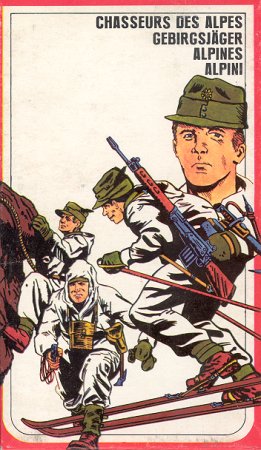

By the 17th October 1941 the Mius river was crossed by the 14th Panzer Division and Taganrog was captured by German troops, with the mountain troops entering Stalino, 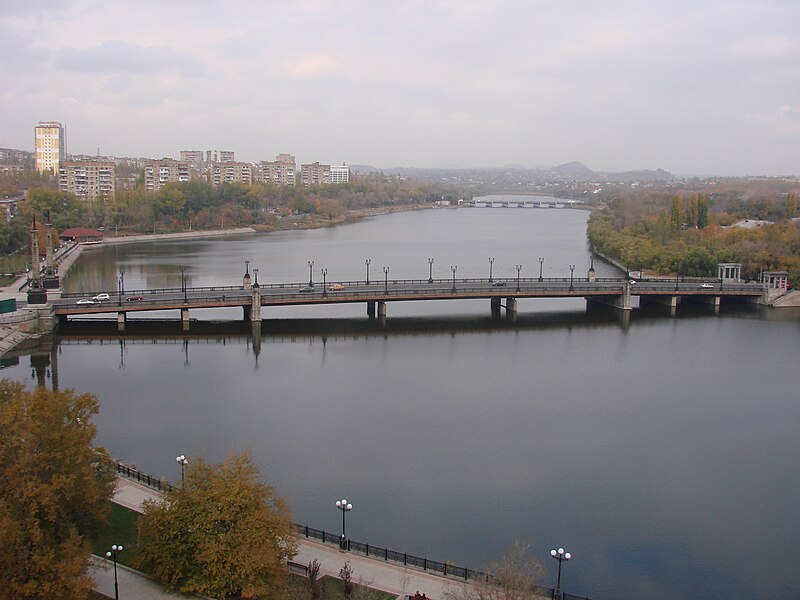 forcing the newly formed 12th Army into a renewed withdrawal. However the Red Army was at this stage fortunate in that the Autumn rains had begun, and the infamousRasputitsa
forcing the newly formed 12th Army into a renewed withdrawal. However the Red Army was at this stage fortunate in that the Autumn rains had begun, and the infamousRasputitsa had set in slowing the 1st Panzer Army's advance to "meter by meter". This meant that the leading German units did not reach the outskirts of Rostov until mid-November, having lost contact with the Red Army in the meantime.
had set in slowing the 1st Panzer Army's advance to "meter by meter". This meant that the leading German units did not reach the outskirts of Rostov until mid-November, having lost contact with the Red Army in the meantime.
 forcing the newly formed 12th Army into a renewed withdrawal. However the Red Army was at this stage fortunate in that the Autumn rains had begun, and the infamousRasputitsa
forcing the newly formed 12th Army into a renewed withdrawal. However the Red Army was at this stage fortunate in that the Autumn rains had begun, and the infamousRasputitsa had set in slowing the 1st Panzer Army's advance to "meter by meter". This meant that the leading German units did not reach the outskirts of Rostov until mid-November, having lost contact with the Red Army in the meantime.
had set in slowing the 1st Panzer Army's advance to "meter by meter". This meant that the leading German units did not reach the outskirts of Rostov until mid-November, having lost contact with the Red Army in the meantime.
The assault on Rostov began on the 17 November, and on 21 November the Germans took Rostov. However, the German lines were over-extended, and von Kleist's warnings that his left flank was vulnerable and that his tanks
German lines were over-extended, and von Kleist's warnings that his left flank was vulnerable and that his tanks  were ineffective in the freezing weather were ignorOn 27 November the Soviet 37th Army, commanded by
were ineffective in the freezing weather were ignorOn 27 November the Soviet 37th Army, commanded by  Lieutenant-General Anton Ivanovich Lopatin, as part of the Rostov Strategic Offensive Operation
Lieutenant-General Anton Ivanovich Lopatin, as part of the Rostov Strategic Offensive Operation
 German lines were over-extended, and von Kleist's warnings that his left flank was vulnerable and that his tanks
German lines were over-extended, and von Kleist's warnings that his left flank was vulnerable and that his tanks  were ineffective in the freezing weather were ignorOn 27 November the Soviet 37th Army, commanded by
were ineffective in the freezing weather were ignorOn 27 November the Soviet 37th Army, commanded by  Lieutenant-General Anton Ivanovich Lopatin, as part of the Rostov Strategic Offensive Operation
Lieutenant-General Anton Ivanovich Lopatin, as part of the Rostov Strategic Offensive Operation
About 20,000 Jews lived in Rostow. Few fled as the Germans advanced. They were urbanized,  unprepared for life hiding in the country. Many did not fear the Germans, having studied in German
unprepared for life hiding in the country. Many did not fear the Germans, having studied in German universities. The Germans rounded up the Jews and marched the men to a ravine just outside the city
universities. The Germans rounded up the Jews and marched the men to a ravine just outside the city --Zmiyovskaya Balka, or the ravine of the snakes (August 11, 1942).
--Zmiyovskaya Balka, or the ravine of the snakes (August 11, 1942). There the killing squads shot them. The women, children and elderly followed. The Nazi killing squads
There the killing squads shot them. The women, children and elderly followed. The Nazi killing squads  gassed them in trucks and dumped their bodies in the same ravine. Communists functinaries and Red Army
gassed them in trucks and dumped their bodies in the same ravine. Communists functinaries and Red Army  soldiers along with their families were also killed and buried there along with their families.
soldiers along with their families were also killed and buried there along with their families.  The death toll came to 27,000 people. Most of Rostov's Jews who survived the War were serving with
The death toll came to 27,000 people. Most of Rostov's Jews who survived the War were serving with
 unprepared for life hiding in the country. Many did not fear the Germans, having studied in German
unprepared for life hiding in the country. Many did not fear the Germans, having studied in German universities. The Germans rounded up the Jews and marched the men to a ravine just outside the city
universities. The Germans rounded up the Jews and marched the men to a ravine just outside the city --Zmiyovskaya Balka, or the ravine of the snakes (August 11, 1942).
--Zmiyovskaya Balka, or the ravine of the snakes (August 11, 1942). There the killing squads shot them. The women, children and elderly followed. The Nazi killing squads
There the killing squads shot them. The women, children and elderly followed. The Nazi killing squads  gassed them in trucks and dumped their bodies in the same ravine. Communists functinaries and Red Army
gassed them in trucks and dumped their bodies in the same ravine. Communists functinaries and Red Army  soldiers along with their families were also killed and buried there along with their families.
soldiers along with their families were also killed and buried there along with their families.  The death toll came to 27,000 people. Most of Rostov's Jews who survived the War were serving with
The death toll came to 27,000 people. Most of Rostov's Jews who survived the War were serving with
the Red Army* (17 November 1941 - 2 December 1941), counter-attacked the 1st Panzer Army's spearhead from the north, forcing them to pull out of the city. Adolf Hitler countermanded the retreat. When von Rundstedt refused to obey,
forcing them to pull out of the city. Adolf Hitler countermanded the retreat. When von Rundstedt refused to obey,  Hitler sacked him. However, retreat was unavoidable, and the 1st Panzer Army was forced back to the Mius River
Hitler sacked him. However, retreat was unavoidable, and the 1st Panzer Army was forced back to the Mius River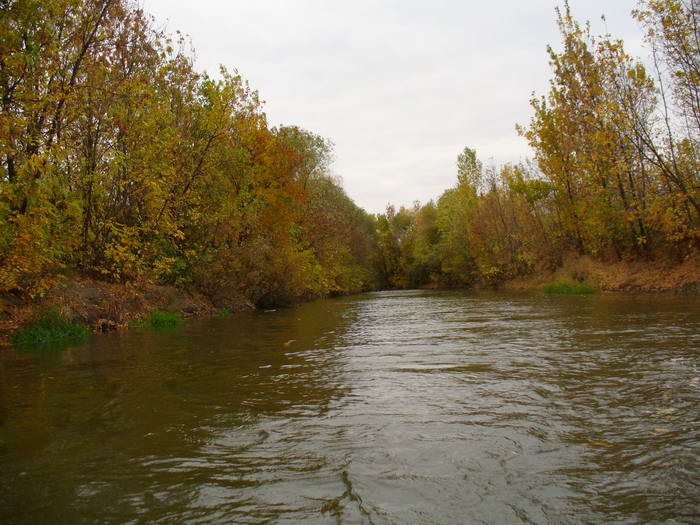
 forcing them to pull out of the city. Adolf Hitler countermanded the retreat. When von Rundstedt refused to obey,
forcing them to pull out of the city. Adolf Hitler countermanded the retreat. When von Rundstedt refused to obey,  Hitler sacked him. However, retreat was unavoidable, and the 1st Panzer Army was forced back to the Mius River
Hitler sacked him. However, retreat was unavoidable, and the 1st Panzer Army was forced back to the Mius River
at Taganrog. It was the first significant German withdrawal of the war.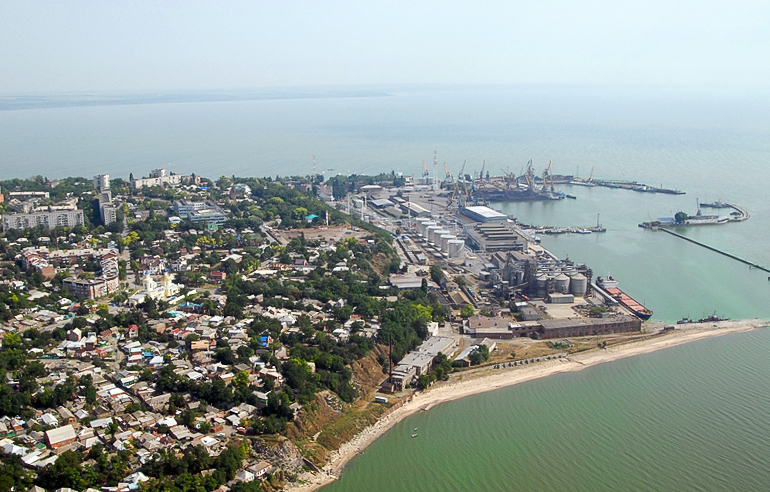 When winter weather made it impossible to move prisoners by road, Wehrmacht directives were issued to have most men transported by rail but only in open wagons. In December 1941, between 25 and 70 percent of
When winter weather made it impossible to move prisoners by road, Wehrmacht directives were issued to have most men transported by rail but only in open wagons. In December 1941, between 25 and 70 percent of  prisoners transported in this way perished en route. A prisoner named Gutyrya would be forever haunted by his
prisoners transported in this way perished en route. A prisoner named Gutyrya would be forever haunted by his trip to Stalag 304. 'The experience in the wagons can hardly be described in words,' he remembered.
trip to Stalag 304. 'The experience in the wagons can hardly be described in words,' he remembered.  'Wounds bled and turned everything black. Men died in each wagon. They died of blood loss, tetanus, blood poisoning, or hunger, thirst and suffocation as well as other deprivation. This inhumane ordeal
'Wounds bled and turned everything black. Men died in each wagon. They died of blood loss, tetanus, blood poisoning, or hunger, thirst and suffocation as well as other deprivation. This inhumane ordeal  lasted for 10 days. The journey came to an end. At noon they unloaded the men. The dead were thrown
lasted for 10 days. The journey came to an end. At noon they unloaded the men. The dead were thrown out onto the platform.'StepanIgnatevich Odiniktsev, a clerk in 60th Cavalry Division, was one of those captured at Millerovo on 17 July. Along with thousands of other Russian prisoners, he was herded to a makeshift cage at Moro-zovsk, next to the main railway line which ran east to Stalingrad and westwards back through the Ukraine. Some prisoners were dispersed over the following weeks to other hastily erected camps, and Odi-niktsev found himself in another open barbed-wire cage near the village of Golubaya.'We were starved to death,' he recounted after78
out onto the platform.'StepanIgnatevich Odiniktsev, a clerk in 60th Cavalry Division, was one of those captured at Millerovo on 17 July. Along with thousands of other Russian prisoners, he was herded to a makeshift cage at Moro-zovsk, next to the main railway line which ran east to Stalingrad and westwards back through the Ukraine. Some prisoners were dispersed over the following weeks to other hastily erected camps, and Odi-niktsev found himself in another open barbed-wire cage near the village of Golubaya.'We were starved to death,' he recounted after78
 When winter weather made it impossible to move prisoners by road, Wehrmacht directives were issued to have most men transported by rail but only in open wagons. In December 1941, between 25 and 70 percent of
When winter weather made it impossible to move prisoners by road, Wehrmacht directives were issued to have most men transported by rail but only in open wagons. In December 1941, between 25 and 70 percent of  prisoners transported in this way perished en route. A prisoner named Gutyrya would be forever haunted by his
prisoners transported in this way perished en route. A prisoner named Gutyrya would be forever haunted by his trip to Stalag 304. 'The experience in the wagons can hardly be described in words,' he remembered.
trip to Stalag 304. 'The experience in the wagons can hardly be described in words,' he remembered.  'Wounds bled and turned everything black. Men died in each wagon. They died of blood loss, tetanus, blood poisoning, or hunger, thirst and suffocation as well as other deprivation. This inhumane ordeal
'Wounds bled and turned everything black. Men died in each wagon. They died of blood loss, tetanus, blood poisoning, or hunger, thirst and suffocation as well as other deprivation. This inhumane ordeal  lasted for 10 days. The journey came to an end. At noon they unloaded the men. The dead were thrown
lasted for 10 days. The journey came to an end. At noon they unloaded the men. The dead were thrown out onto the platform.'StepanIgnatevich Odiniktsev, a clerk in 60th Cavalry Division, was one of those captured at Millerovo on 17 July. Along with thousands of other Russian prisoners, he was herded to a makeshift cage at Moro-zovsk, next to the main railway line which ran east to Stalingrad and westwards back through the Ukraine. Some prisoners were dispersed over the following weeks to other hastily erected camps, and Odi-niktsev found himself in another open barbed-wire cage near the village of Golubaya.'We were starved to death,' he recounted after78
out onto the platform.'StepanIgnatevich Odiniktsev, a clerk in 60th Cavalry Division, was one of those captured at Millerovo on 17 July. Along with thousands of other Russian prisoners, he was herded to a makeshift cage at Moro-zovsk, next to the main railway line which ran east to Stalingrad and westwards back through the Ukraine. Some prisoners were dispersed over the following weeks to other hastily erected camps, and Odi-niktsev found himself in another open barbed-wire cage near the village of Golubaya.'We were starved to death,' he recounted after78
being found over three months later by Red Army troops. 'On the best days we received a little rye in boiled water. Meat from a dead horse was a delicacy. We were constantly beaten
 with rifle butts,sometimes without any reason. Each day, dozens of people died from
with rifle butts,sometimes without any reason. Each day, dozens of people died from starvation or beating.' Although the NKVD was highly suspicious of any Red Army soldier taken by the Germans, Odiniktsev's interrogator believed his story. 'This man', he scribbled in pencil at the bottom of the typed report, 'looks like a skeleton covered with skiSecond only to the extermination of the Jews, the massacre of Russian prisoners of war must rank as the greatest of tragedies of World War II. During the first seven months of the Russian campaign, over three million Soviet soldiers were captured.
starvation or beating.' Although the NKVD was highly suspicious of any Red Army soldier taken by the Germans, Odiniktsev's interrogator believed his story. 'This man', he scribbled in pencil at the bottom of the typed report, 'looks like a skeleton covered with skiSecond only to the extermination of the Jews, the massacre of Russian prisoners of war must rank as the greatest of tragedies of World War II. During the first seven months of the Russian campaign, over three million Soviet soldiers were captured.  By February, 1942, only 1,020,531 were still alive. Some two million had died of starvation and cold during their forced march to the rear (up to 400 kilometres). Out in the open, day and night, they fell by the wayside in their thousands.
By February, 1942, only 1,020,531 were still alive. Some two million had died of starvation and cold during their forced march to the rear (up to 400 kilometres). Out in the open, day and night, they fell by the wayside in their thousands. When finally they reached their POW enclosures and given their first real meal, they 'simply collapsed and lay dead on the
When finally they reached their POW enclosures and given their first real meal, they 'simply collapsed and lay dead on the  floor'. Starved to death in their POW cages, they died in the open, having eaten the last blade of grass. Many were reduced to a
floor'. Starved to death in their POW cages, they died in the open, having eaten the last blade of grass. Many were reduced to a  state of cannibalism after begging for a scrap of food or a cigarette. In one camp a German guard was killed and eaten and a dead dog, thrown over the wire fence, was pounced upon and torn to shreds with their bare hands, so desperate were the
state of cannibalism after begging for a scrap of food or a cigarette. In one camp a German guard was killed and eaten and a dead dog, thrown over the wire fence, was pounced upon and torn to shreds with their bare hands, so desperate were the  prisoners for food. Thousands were tortured and then shot in concentration camps, or, as slave labourers, worked till they dropped in quarries and in factories. Of the 9,000 prisoners sent to the Buchenwald camp only 800 were alive when US
prisoners for food. Thousands were tortured and then shot in concentration camps, or, as slave labourers, worked till they dropped in quarries and in factories. Of the 9,000 prisoners sent to the Buchenwald camp only 800 were alive when US  troops liberated the camp in 1945. In the notorious Dachau camp, of the 10,000 Russian POWs who arrived there in 1941, only 150 were alive by mid-1942. By 1944, it is estimated that around 3,299,000 Russian prisoners of war were disposed of in this way.
troops liberated the camp in 1945. In the notorious Dachau camp, of the 10,000 Russian POWs who arrived there in 1941, only 150 were alive by mid-1942. By 1944, it is estimated that around 3,299,000 Russian prisoners of war were disposed of in this way. At the end of May, 1944, there were a total of 5,160,000 Soviet soldiers in German custody. Of these, only 1,053,000
At the end of May, 1944, there were a total of 5,160,000 Soviet soldiers in German custody. Of these, only 1,053,000  survived the war.'All we were getting to eat was watery soup with pieces of rotten meat, a diet that was literally decimating us. It was the flesh of dead horses killed and lying alongside
survived the war.'All we were getting to eat was watery soup with pieces of rotten meat, a diet that was literally decimating us. It was the flesh of dead horses killed and lying alongside  the roads since the German air strikes in the first week of July that was now to become our staple. The horses, their swollen bellies and open wounds full of white maggots and other parasitic worms, were collected by prisoners on adjacent roads.'In December 1941, one camp commandant noted that 1,000 wounded or sick prisoners had been brought to open-air collection points
the roads since the German air strikes in the first week of July that was now to become our staple. The horses, their swollen bellies and open wounds full of white maggots and other parasitic worms, were collected by prisoners on adjacent roads.'In December 1941, one camp commandant noted that 1,000 wounded or sick prisoners had been brought to open-air collection points 'where they mostly soon perished in the cold.' At Stalag 324, it became customary for the sick to be shot once a week. An epidemic of dysentery at Stalag 359B led to a grisly final solution.
'where they mostly soon perished in the cold.' At Stalag 324, it became customary for the sick to be shot once a week. An epidemic of dysentery at Stalag 359B led to a grisly final solution.  Between September 21The result of all this abuse was that the daily mortality in an average camp was from 80 to 150 men. By January 1942, this equated to an average of 6,000 men per day. Less than a year after
Between September 21The result of all this abuse was that the daily mortality in an average camp was from 80 to 150 men. By January 1942, this equated to an average of 6,000 men per day. Less than a year after  the start of Operation Barbarossa, in April 1942, a total of 309,816 prisoners had died in the camps in
the start of Operation Barbarossa, in April 1942, a total of 309,816 prisoners had died in the camps in  Poland alone. One German official in the occupied territories coldly noted that as of February 19, 1942, of the 3.9 million prisoners taken to that point, only 1.1 million remained in the camps.
Poland alone. One German official in the occupied territories coldly noted that as of February 19, 1942, of the 3.9 million prisoners taken to that point, only 1.1 million remained in the camps. Some 280,000 prisoners, mainly Balts and Ukrainians, had been given the dubious privilege of being sent from almost certain death in theRussenlager to begin the slow death of work as slave laborers. The rest had simply perished.
Some 280,000 prisoners, mainly Balts and Ukrainians, had been given the dubious privilege of being sent from almost certain death in theRussenlager to begin the slow death of work as slave laborers. The rest had simply perished.and 28, 1941, Police Battalion 306 launched Operation Chickenfarm, which saw some 6,000 Red Army prisoners shot by German troops — 3,261 of them on the first day. In the subsequent report detailing the
 murders, victims were described as 'laid eggs.'Soviet treatment of German POW was also brutal, but not
murders, victims were described as 'laid eggs.'Soviet treatment of German POW was also brutal, but not as genocidal as German policies. In fact German POW fared better than domestic prisoners in the Soviet Gulag. It is unclear why. Some believe that Stalin wanted to influence POW that were to be repatriated. The Japanese treatment of POW was barbaric. POW were starved, brutalized, and used for forced labor. Some were even used for medical experiments, including live vivisection and assessments of biological weapons. American combat soldiers were often brutal with Japanese soldiers, but once in camps the treatment was correct.
as genocidal as German policies. In fact German POW fared better than domestic prisoners in the Soviet Gulag. It is unclear why. Some believe that Stalin wanted to influence POW that were to be repatriated. The Japanese treatment of POW was barbaric. POW were starved, brutalized, and used for forced labor. Some were even used for medical experiments, including live vivisection and assessments of biological weapons. American combat soldiers were often brutal with Japanese soldiers, but once in camps the treatment was correct. A week after the discovery of the Belsen Concentration Camp, a rumour reached the British Army's 'Desert Rats' that the 18th SS Training Regiment of the Hitler Jugend Division, had shot their prisoners at
A week after the discovery of the Belsen Concentration Camp, a rumour reached the British Army's 'Desert Rats' that the 18th SS Training Regiment of the Hitler Jugend Division, had shot their prisoners at the nearby village of Rather. The 'Rats' were engaged in a fierce battle with the SS defenders in the village of Nahrendorf.
the nearby village of Rather. The 'Rats' were engaged in a fierce battle with the SS defenders in the village of Nahrendorf. Slowly, and in groups, the SS began to surrender.As the noise of battle died away the villagers emerged from their cellars and found the bodies of 42 SS soldiers lying in a shallow grave. The bodies were then interned on a hilltop cemetery near the village. Each year, hundreds of SS veterans visit the cemetery to pay tribute to their fallen comrades whom, they say, were shot in cold blood on the
Slowly, and in groups, the SS began to surrender.As the noise of battle died away the villagers emerged from their cellars and found the bodies of 42 SS soldiers lying in a shallow grave. The bodies were then interned on a hilltop cemetery near the village. Each year, hundreds of SS veterans visit the cemetery to pay tribute to their fallen comrades whom, they say, were shot in cold blood on the  orders of a ‘crazed blood-thirsty British NCO’. (Perpetrators are honoured, victims are forgotten)
orders of a ‘crazed blood-thirsty British NCO’. (Perpetrators are honoured, victims are forgotten)
The "London Cage", a MI19 prisoner of war facility in the UK during and immediately after the war, was subject to allegations of torture.A "cage" for interrogation of prisoners was established in 1940 in each command area of the UK, manned by officers trained by Alexander Scotland
 , the head of Prisoner of War Interrogation Section (PWIS) of the Intelligence Corps. The prisoners were sent to prison camps after their interrogation at the cages. Nine cages were established from southern England to Scotland, with the London cage also being "an important transit camp."
, the head of Prisoner of War Interrogation Section (PWIS) of the Intelligence Corps. The prisoners were sent to prison camps after their interrogation at the cages. Nine cages were established from southern England to Scotland, with the London cage also being "an important transit camp."
The cages varied in facilities. The Doncaster cage used a portion of the town's racecourse as a camp, while the Catterick and Loughborough cages were in bare fields. The London Cage, located in a fashionable part of the city, had space for 60 prisoners, was equipped with five interrogation rooms, and staffed by 10 officers serving under Scotland, plus a dozen noncommissioned officers who served as interrogators and interpreters. Security was provided by soldiers from the Guards regiments selected "for their height rather than their brains."

After the war, the PWIS became known as the War Crimes Investigation Unit (WCIU), and the London Cage became the headquarters for questionining suspected war criminals. Among the Nazi war criminals confined at the London cage was Fritz Knoechlein, who was in charge of the murder of 100 British prisoners who had surrendered atLe Paradis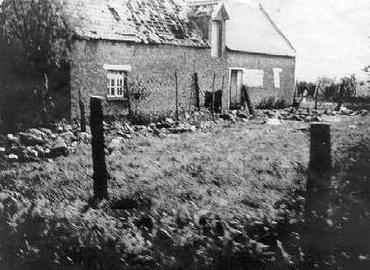

Alexander Scotland participated in the interrogation of Gen. Kurt Meyer,

who was accused of participating in a
massacre of Canadian troops. Meyer was eventually sentenced to death, although the sentence was not carried out. Scotland observed that Meyer received milder treatment after news of the atrocity had grown "cold". He said that Nazi SS and Police Leader Jakob Sporrenberg,

who was responsible for the deaths of 46,000 Jews in Poland toward the end of the war, was not prosecuted by Poland despite documentary evidence of his crimes, because of Polish dislike of Jews. (Sporrenberg was in fact sentenced to death by a Polish court in Warsaw in 1950, and executed in December 1952)
Other Nazi war criminals passing through the London Cage after the war included Sepp Dietrich, an SS general 

accused but never prosecuted for the murder of British prisoners in 1940. Alexander Scotland participated in the

investigation of the SS and Gestapo men who murdered 50 escaped prisoners from Stalag Luft III in 1944,

in the aftermath of what became known as the "Great Escape". The London Cage closed in 1948

MASSACRE BY AMERICANS
* The Dachau massacre: killing of German prisoners of war and surrendering SS soldiers at the Dachau concentration camp.
* In the Biscari massacre, which consist of two instances of mass murders, U.S. troops of the 45th Infantry Division killed roughly 75 prisoners of war, mostly Italian.As part of the Allied
 invasion of Sicily, the 7th U.S Army under Lieutenant General George S. Patton and the British Eighth Army under General Sir Bernard L. Montgomeryinvaded the southeast corner of the island on 10 July 1943. As part of Lieutenant General Omar H. Bradley’s II Corps, the 45th Infantry Division was given a difficult task despite the fact that it was the only “green” division participating in the invasion. The 45th Divisions's 157th Infantry Regiment and
invasion of Sicily, the 7th U.S Army under Lieutenant General George S. Patton and the British Eighth Army under General Sir Bernard L. Montgomeryinvaded the southeast corner of the island on 10 July 1943. As part of Lieutenant General Omar H. Bradley’s II Corps, the 45th Infantry Division was given a difficult task despite the fact that it was the only “green” division participating in the invasion. The 45th Divisions's 157th Infantry Regiment and  179th Infantry Regiment were tasked with capturing several coastal towns and the Comiso airfield before linking up with the 1st Canadian Infantry Division.
179th Infantry Regiment were tasked with capturing several coastal towns and the Comiso airfield before linking up with the 1st Canadian Infantry Division.
The 180th Infantry Regiment was tasked with capturing the Biscari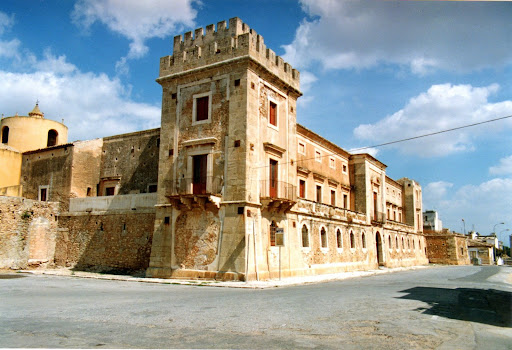 airfield and linking up the US 1st Infantry Division. The 180th Infantry Regiment performed so poorly in the first 48 hours of the landing that Major General Troy Middleton
airfield and linking up the US 1st Infantry Division. The 180th Infantry Regiment performed so poorly in the first 48 hours of the landing that Major General Troy Middleton 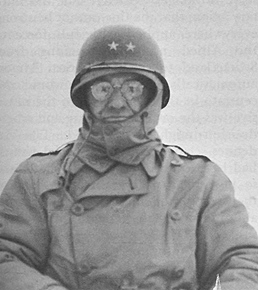 considered relieving its commander. Instead, the assistant division commander was sent to exercise close supervision over the regiment.
considered relieving its commander. Instead, the assistant division commander was sent to exercise close supervision over the regiment.
 airfield and linking up the US 1st Infantry Division. The 180th Infantry Regiment performed so poorly in the first 48 hours of the landing that Major General Troy Middleton
airfield and linking up the US 1st Infantry Division. The 180th Infantry Regiment performed so poorly in the first 48 hours of the landing that Major General Troy Middleton  considered relieving its commander. Instead, the assistant division commander was sent to exercise close supervision over the regiment.
considered relieving its commander. Instead, the assistant division commander was sent to exercise close supervision over the regiment.Following the capture of the Biscari airfield on 14 July 1943, troops of the 180th Infantry killed 71 Italian and two German POWs in two separate incidents. In the first incident, 36 Italians died, while the second killing involved 35 Italians and two GermansAs commander of C Company, 1st Battalion, 180th Infantry Regiment, Captain John T. Compton landed south of the Acate River
36 Italians died, while the second killing involved 35 Italians and two GermansAs commander of C Company, 1st Battalion, 180th Infantry Regiment, Captain John T. Compton landed south of the Acate River amidst sporadic mortar and small arms fire.
amidst sporadic mortar and small arms fire. Pursuing his first objective, he pushed his company towards Highway 115, joined with some 82nd Airborne paratroopers,
Pursuing his first objective, he pushed his company towards Highway 115, joined with some 82nd Airborne paratroopers, and attacked several German positions. Compton did not sleep during the first three days of the invasion. He was simply “too excited to sleep.” On the fourth day, he managed to grab about an hour and a half of sleep before the attack
and attacked several German positions. Compton did not sleep during the first three days of the invasion. He was simply “too excited to sleep.” On the fourth day, he managed to grab about an hour and a half of sleep before the attack  on the Biscari airfield. Around 11:00 P.M., C Company set off and reached the airfield around 11:00 A.M. on 14 July 1943. Immediately they began to receive artillery, mortar, andsniper fire. The sniper fire was especially deadly. From a concealed position in a nearby draw, the snipers targeted wounded G.I.s as well as the medics attempting to aid them. Out of 34 men in Compton’s 2nd Platoon, 12 were either wounded in action (WIA) or killed in action (KIA).
on the Biscari airfield. Around 11:00 P.M., C Company set off and reached the airfield around 11:00 A.M. on 14 July 1943. Immediately they began to receive artillery, mortar, andsniper fire. The sniper fire was especially deadly. From a concealed position in a nearby draw, the snipers targeted wounded G.I.s as well as the medics attempting to aid them. Out of 34 men in Compton’s 2nd Platoon, 12 were either wounded in action (WIA) or killed in action (KIA).
 36 Italians died, while the second killing involved 35 Italians and two GermansAs commander of C Company, 1st Battalion, 180th Infantry Regiment, Captain John T. Compton landed south of the Acate River
36 Italians died, while the second killing involved 35 Italians and two GermansAs commander of C Company, 1st Battalion, 180th Infantry Regiment, Captain John T. Compton landed south of the Acate River amidst sporadic mortar and small arms fire.
amidst sporadic mortar and small arms fire. Pursuing his first objective, he pushed his company towards Highway 115, joined with some 82nd Airborne paratroopers,
Pursuing his first objective, he pushed his company towards Highway 115, joined with some 82nd Airborne paratroopers, and attacked several German positions. Compton did not sleep during the first three days of the invasion. He was simply “too excited to sleep.” On the fourth day, he managed to grab about an hour and a half of sleep before the attack
and attacked several German positions. Compton did not sleep during the first three days of the invasion. He was simply “too excited to sleep.” On the fourth day, he managed to grab about an hour and a half of sleep before the attack  on the Biscari airfield. Around 11:00 P.M., C Company set off and reached the airfield around 11:00 A.M. on 14 July 1943. Immediately they began to receive artillery, mortar, andsniper fire. The sniper fire was especially deadly. From a concealed position in a nearby draw, the snipers targeted wounded G.I.s as well as the medics attempting to aid them. Out of 34 men in Compton’s 2nd Platoon, 12 were either wounded in action (WIA) or killed in action (KIA).
on the Biscari airfield. Around 11:00 P.M., C Company set off and reached the airfield around 11:00 A.M. on 14 July 1943. Immediately they began to receive artillery, mortar, andsniper fire. The sniper fire was especially deadly. From a concealed position in a nearby draw, the snipers targeted wounded G.I.s as well as the medics attempting to aid them. Out of 34 men in Compton’s 2nd Platoon, 12 were either wounded in action (WIA) or killed in action (KIA).
In an attempt to locate the snipers’ firing position, Private Raymond C. Marlow crept down into a nearby draw. He had only gone about 25 yards into the draw before he spotted an Italian soldier with a rifle. Marlow raised his rifle and shouted at the Italian. The Italian ran away and entered a dugout that was located further in the draw. After a minute or two, the Italian soldier emerged with thirty-five others, several of which were in civilian clothing. Marlow walked them up the hill to his outpost and reported to his squad leader, Sergeant Hair. “I told him that I had gotten those fellows that were shooting at us while we were getting out from under that artillery fire,” Marlow reported. Acting as an interpreter, Private John Gazzetti asked the prisoners if they had been acting as snipers. He got no response. Hair herded the prisoners out of the draw and asked 1st Lieutenant Blanks what he should do with them. Blanks, in turn, asked Compton for instructions. Compton asked Blanks if he was sure that they were the same snipers that had been shooting at them all day. When Blanks answered in the affirmative, Compton said bluntly, “Get them shot.” Without hesitation, Blanks ordered Hair to assemble a firing squad and shoot the prisoners.
Compton accompanied the firing squad of about 11 men to the ridge overlooking the draw.He told the G.I.s to line up and they positioned themselves about six feet away from the prisoners. The prisoners started pleading for them not to shoot. Gazzetti, the interpreter, asked Compton if he had anything to say to the prisoners. Compton did not have anything he wanted to ask them. Compton told the men to commence firing on his order and that he “didn’t want a man left standing when the firing was done.” Seeing that their fate was sealed, a few of the prisoners began to run. The firing squad opened fire and killed all of the prisoners.On the same day, and near the same airfield, Sergeant Horace B. West was ordered to escort a recently captured group of prisoners to the rear for interrogation. Along the way, West halted the column and shot 35 Italian prisoners and 2 German prisoners with his Thompson submachine gun.[When he was informed of the massacres, General Omar Bradley told General George S. Patton that U.S. troops had murdered some 50-70 prisoners in cold blood. Patton noted his response in his diary:

I told Bradley that it was probably an exaggeration, but in any case to tell the Officer to certify that the dead men were snipers or had attempted to escape or something, as it would make a stink in the press and also would make the civilians mad. Anyhow, they are dead, so nothing can be done about it.
Bradley refused Patton's instructions.In regards to the first incident, Captain John T. Compton was court martialed for killing 36 POWs under his charge. Relying upon the respondeat superior legal doctrine, Compton defended his actions by claiming that he was merely following orders from his superiors. The investigating officer and the Judge Advocate declared that Compton's actions to be unlawful, but the court martial nevertheless acquitted him. He was transferred to the 179th Infantry Regiment and was killed in action on 8 November 1943 in Italy.The U.S. Army also charged Sergeant Horace T. West for the second incident. West admitted he had participated in the executions. Accordingly, he was found guilty, stripped of rank and sentenced to life in prison. He was later dishonorably discharged as a Private.The U.S. Army never held Colonel Forrest E. Cookson, the Regimental Commander, accountable, as there was no evidence to suggest that he had either ordered the murders or had advance knowledge of them
* Operation Teardrop: Eight of the surviving, captured crewmen from the sunk German submarine U-546 are tortured by US military personnel. Historian Philip K. Lundeberg has written that the beating I told Bradley that it was probably an exaggeration, but in any case to tell the Officer to certify that the dead men were snipers or had attempted to escape or something, as it would make a stink in the press and also would make the civilians mad. Anyhow, they are dead, so nothing can be done about it.

 and torture of U-546's survivors was a singular atrocity motivated by the interrogators' need to quickly
and torture of U-546's survivors was a singular atrocity motivated by the interrogators' need to quickly get information on what the US believed were potential missile attacks on the continental US by German submarines.
get information on what the US believed were potential missile attacks on the continental US by German submarines.
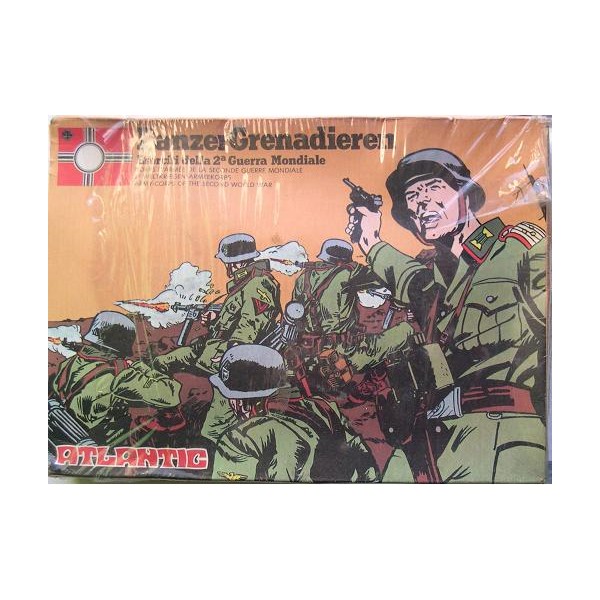


No comments:
Post a Comment